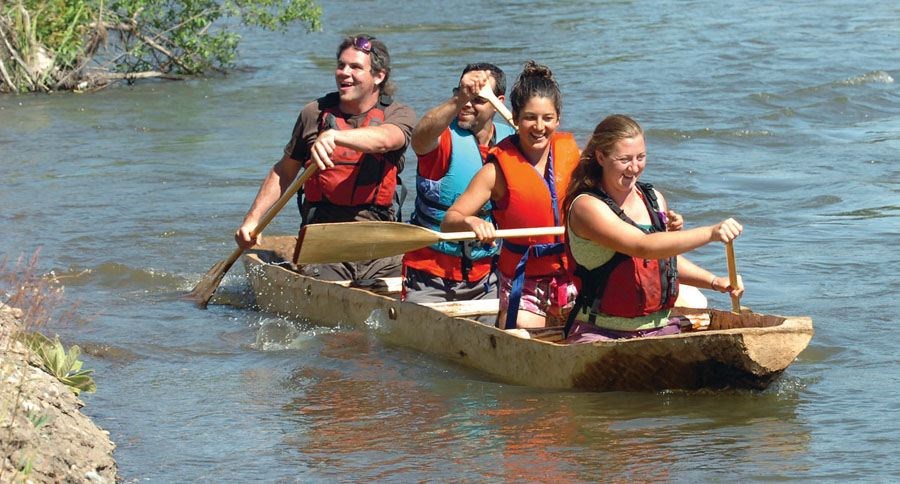For the first time in an estimated 70 years, an authentic Lheidli T'enneh cottonwood canoe was launched. The maiden voyage of the freshly carved vessel was made on Monday at the Lheidli T'enneh First Nation reserve at the west end of North Nechako Road.
Two elders presided over the event, Edie and Robert Frederick, the instructors of a special UNBC course in traditional aboriginal canoe carving. More than a dozen students took part, working from 9 a.m. to 5 p.m. each day of the course at the details of log selection, sawing, carving and wood treatment. Two boats were made in the process.
"We also learned history, fishing practices, harvesting plants and berries, drumming, singing, language, storytelling, there was a lot involved in this exercise," said Jen Pighin, a Lheidli T'enneh councillor.
"I was so proud to be part of it," said Edie Frederick. "When we talk about our oral history, well that concept came to life in that two weeks as we took the things we knew from our culture and passed it down to the next generation that way it had been taught to us. It opens the door for other First Nations topics to be studied, too, at the university level."
These were the third and fourth canoes that the Fredericks have been involved in carving (Robert learned to carve as a child but took master training from renowned artist Ron Sebastien prior to the canoe projects).
The first one was done for the Huble Homestead Historical Society and still sits at the tourist attraction north of the city. The second is on display at UNBC, finished last year and used as a mould for a fiberglass replica now featured on the front lawn of City Hall.
"Neither of those canoes was ever put in the water," said Frederick. It was perplexing to her that it had been so long since anyone from the LTFN built one of these small but robust watercraft. It was once the most common vehicle the river-based nation used.
"Things fell dormant. We had a lot of obstacles before us," Frederick said. "The skills are being revived now."
Pighin said the alternate name for Carrier peoples from the Central Interior region is Dakelh, which translates to "people who travel by water."
One of the struggles over the past 100-odd years was simple mutual appreciation between aboriginal and non-aboriginal. Pighin and Frederick were both thrilled that about half the students in the canoe course were First Nations youth but the other half - "the most enthusiastic ones," according to Frederick - weren't.

.png;w=120;h=80;mode=crop)

